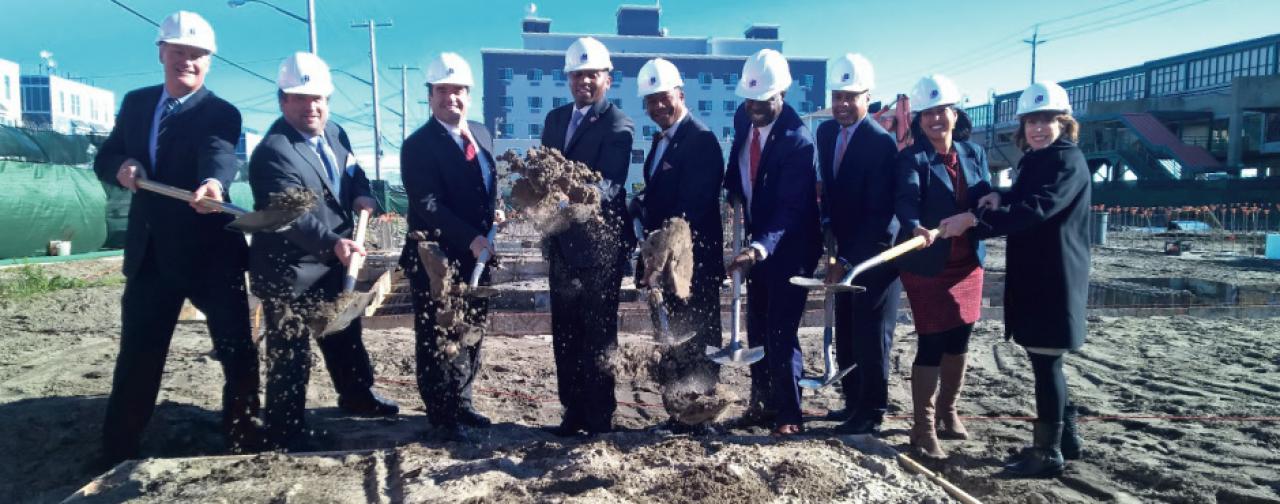- For Professionals
- PHIUS+ Standard
- Case Studies
- Design Guide
- FAQs
- Does Passive Building Cost More to Build ?
- Can Passive Building Scale to Multifamily?
- Are Passive Buildings Resilient?
- Do Passive Buildings Cause Mold?
- What Are the Risks of Passive Building?
- How Long Is The PHIUS+ Certification Process?
- How Much Do Passive House Certifications Differ?
- What About Passive Building HVAC Systems?
Passive Building For Developers

PASSIVE BUILDINGS CAN BOOST YOUR BOTTOM LINES MANY WAYS
Because buildings usually have tenants, and tenants are *usually* people, the superior comfort, quality, and health aspects delivered by PHIUS+ usually translate into better NOI and sale value.
- The bottom line from Sloan Ritchie, a developer in Seattle, Wash boils down to premium, NOI, and communication with stakeholders.Ritchie says that for his company, Passive Building does indeed cost more, at least in the beginning. "The cost delta on our first project was under 5%, it went down on the next one, and I’m sure we can make it a lot less."
- More income, lower vacancy, and smaller operating costs equal more value for the building owner. All of these things are common to passive building projects that include tenants who are people, so NOI is better than typical code-built facilities.
- The passive building concept is pretty visionary in the outside world. Therefore, it is not always well-received by bankers, appraisers, and others. It is usually best to speak to these people in mundane terms.
Read more of Ritchie's story in The Business Case section of the Design Guide for Commercial Construction.
To help you understand what you're getting into—so that you can put together a compelling proposal to Investors, understand these concepts and cover them in your elevator pitch.
Integrated design assures the best result
Multiple experts at the table mean that many experts can look at problems from varied viewpoints to find the best solutions available. Not the best possible, not the most expensive, but the best tradeoff within the budget.
The decision to commit to PHIUS+ Passive Building Certification affects the planning and delivery process from the beginning. It defines how a development budget and timeline for a project are laid out, and it determines who the best-qualified team members are. It adds upfront time to the design and planning phase of a project instead of adding cost and missed deadlines to the construction phase.
Regular coordination meetings with all team members present are a powerful way to keep the extra design time to a minimum.
If you are unsure about the viability of a particular project candidate, consider an economic feasibility study early on in the design phase. The study will help you compare current code construction cost and performance in your area to passive building cost and performance.
With that information in hand, a developer is in a much better position to assess if the project is a good candidate or not. We especially recommend feasibility studies for retrofits, which tend to be more costly than new builds.
Building the right team is crucial
Experience matters in passive building. Building professionals who have never done it before can do it, but you will pay for their learning curve. If you are new to passive building, then surround yourself with a broadly experienced team. After you've got a few projects under your belt, you can take a chance on the new kid.
A team of certified passive building professionals from all of the relevant fields can help ensure that a project comes in as budgeted, on time, and with full quality assurance.
- Certified Passive House Consultant (CPHC®)
- PHIUS Certified Builder
- PHIUS+ Certified Rater or Large Building Verifier
Look for professionals who have already worked with PHIUS on similarly sized projects and are knowledgeable about the certification and QA process for multifamily buildings.
PHIUS is built on Quality Assurance
PHIUS is the only passive building certification program in the US to include third-party verification of the design and construction processes.
PHIUS certification staff has reviewed 1000 projects in most North American climate zones. All PHIUS professionals are trained in passive technologies and the certification process to make it go as smoothly as possible.
PHIUS’s experienced certification staff provides valuable assistance and additional consulting to the CPHC throughout the entire process to assure quality for the client and to minimize any risk factors.
Passive buildings use commonly available construction materials
All materials needed to execute PHIUS+ buildings are affordable and available in the US and Canada. The notion that expensive imports and specialty products are necessary to complete passive structures is not true.
However, it is a good idea to verify the product's performance data, so that the data we plug into the energy model is accurate, and so that the results we predict will be correct, too.
PHIUS has a window performance database and a ventilation database. For other product information, contact the manufacturers and ask for third-party verification of products, components and performance data.
Commit to achieving full certification
The PHIUS+ certification program and multifamily onsite verification protocols have been specially designed for the North American construction market to assure thorough third-party verification throughout design and construction based on accepted industry standards and building science practices.
The program is aligned with and promoted by the Department of Energy Zero Energy Home Program. Achieving PHIUS+ certification is the best way to assure built performance and minimize risks.
Contact PHIUS today to make your next multifamily project a passive building.
